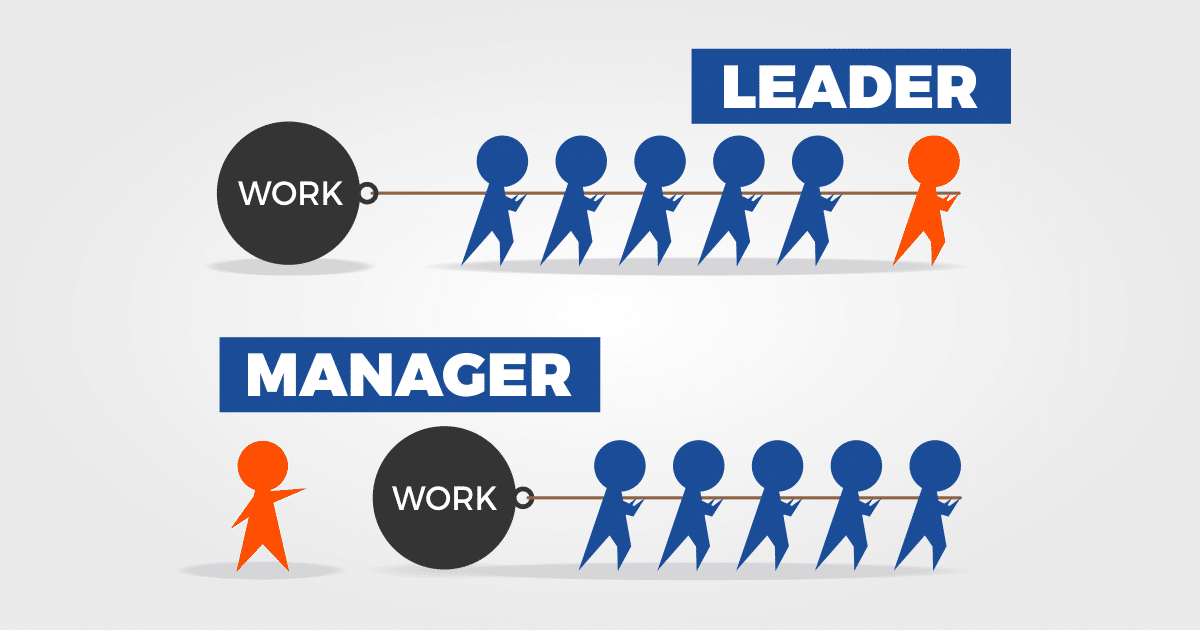Nursing Quiz (with answers)
Nursing Quiz
Question description
1.Discuss the differences between a leader and a manager.
A leader inspires, motivates, and influences others towards a common vision or goal. Leaders focus on people, developing trust and fostering innovation. They are visionary, often driving change and fostering a collaborative environment.
A manager, on the other hand, focuses on processes, structures, and tasks. Managers aim to ensure efficiency and organization by overseeing operations, planning, and problem-solving. They work within established systems to achieve specific goals and maintain order. While leaders prioritize inspiring others, managers emphasize control, coordination, and maintaining smooth functioning.

2. Which is more important, working for an effective leader or an effective manager? Explain your answer.
While both are important, working for an effective leader may have a more significant long-term impact. An effective leader can inspire teams to exceed expectations, adapt to changes, and foster a positive work culture. Leadership emphasizes personal growth, team cohesion, and innovation, which are crucial for long-term success. An effective manager ensures daily tasks are completed efficiently but may not always inspire teams to push beyond their limits. (Nursing Quiz (with answers))
3. Observe the nurse manager in a unit to which students have been assigned. What management style is displayed? How does the staff respond to this style
During clinical rotations, nursing students often observe nurse managers exhibiting different management styles, such as autocratic, democratic, or laissez-faire. The staff’s response often depends on the style. For example, in a democratic management style, the team may show greater engagement and satisfaction because their input is valued. In an autocratic style, staff might feel more restricted but the unit can function with strict adherence to rules.
4. What qualities do you think are most important to be a good nurse manager?
To be a good nurse manager, key qualities include strong communication skills, empathy, adaptability, decision-making abilities, and leadership qualities. Additionally, a nurse manager should be able to mentor and support staff, promoting a positive work environment and ensuring high-quality patient care.

1. Interview the nurse manager on your assignment unit. What interpersonal, decisional, and informational activities does he or she complete on a daily basis?
A nurse manager’s daily activities include:
- Interpersonal: Building relationships with staff, mediating conflicts, and providing feedback.
- Decisional: Making staffing decisions, managing the budget, and addressing unit challenges.
- Informational: Disseminating policy updates, communicating with the healthcare team, and staying informed on patient outcomes and institutional goals.
2. You are the nurse manager on your unit. One of the most experienced staffers has been out on sick leave, and another just had a baby. The rest of the staff are working very hard to pick up the slack to avoid using agency personnel. What tangible and intangible rewards might you use to thank the staff?
To thank staff for hard work, a nurse manager might offer:
- Tangible rewards: Bonuses, additional paid time off, or gift cards.
- Intangible rewards: Public recognition, verbal appreciation, or flexible scheduling.
3. PART 1: Begin by writing a 50-word description of the ideal nurse manger, someone you would like to work for. Describe a real-life nurse manager whom you have encountered in one of your clinical rotations. What qualities of this person meet your ideal? In what ways does this individual not meet your ideal? (Reminder: nobody’s perfect.)
The ideal nurse manager is supportive, approachable, and fosters teamwork. They balance leadership with empathy, ensuring both staff and patient needs are met. During my clinical rotation, I observed a nurse manager who was exceptionally organized and focused but lacked strong interpersonal connections with the staff. This did not meet my ideal of a manager who fosters both personal and professional growth.
PART 2: Think about becoming an ideal manager yourself. What qualities of an ideal manager do you already possess? What qualities do you still need to develop? How will you accomplish this?
I possess strong communication skills and empathy, both essential for an ideal manager. However, I need to develop better decision-making abilities and adapt to high-pressure situations more effectively. I will achieve this by seeking mentorship, attending leadership workshops, and gaining more experience in supervisory roles. (Nursing Quiz (with answers))
1. Find your own state’s requirements for informed consent. Do elective procedures and emergency situations use the same standard?
Informed consent requirements vary by state, but generally, elective procedures require detailed discussions with patients about risks, benefits, and alternatives. Emergency situations may allow for implied consent if the patient cannot give consent and immediate intervention is necessary to save a life.
2. Obtain a copy of your state’s Nurse Practice Act. Does the act give adequate guidance for nurses to know if an action is within the scope of nursing practice?
The Nurse Practice Act provides a framework that helps nurses understand their scope of practice, including professional boundaries, decision-making authority, and delegation. It serves as a guide to ensure safe and ethical nursing care, tailored to each state’s regulatory environment.
1. Explain how the Nurse Practice Act in your state provides for consumer protection and for professional nursing progress.
The Nurse Practice Act ensures consumer protection by outlining the legal scope of practice for nurses, preventing unqualified individuals from providing unsafe care. It promotes professional progress by establishing continuing education requirements and supporting evidence-based practice.
2. What are your thoughts on multistate licensure? How does it strengthen and weaken professional nursing?
Multistate licensure enhances nursing mobility, allowing nurses to practice across state lines, which can address nursing shortages. However, it also presents challenges, such as differing state regulations and maintaining consistency in quality of care.
(Nursing Quiz (with answers))
3. As a new nurse, how can you ensure confidentiality in clinical settings?
To ensure confidentiality in clinical settings, a new nurse can follow guidelines such as keeping patient records secure, only discussing patient information with authorized personnel, and avoiding sharing information in public areas. Additionally, nurses must refrain from sharing identifiable patient information on social media or any other public platform.
4. How can nurses safeguard the confidentiality of medical information when sending it by fax or e-mail?
To safeguard the confidentiality of medical information sent by fax or email, nurses should use secure methods like encryption and password protection. Fax machines should be located in secure areas, and emails must be sent through secure, encrypted systems. Verifying the recipient’s information before sending is crucial to avoid any unauthorized access.
5. Explain the role of the nurse in obtaining informed consent. Do you believe that this is within the scope of nursing practice? Explain your answer.
Nurses play a supportive role in the informed consent process. They ensure that the patient understands the information provided by the physician, clarify any questions, and witness the patient’s signature. While obtaining informed consent is generally the responsibility of the physician, nurses ensure that the patient is informed and comfortable with the decision. Many believe this role is within the scope of nursing, as it aligns with patient advocacy and education.
(Nursing Quiz (with answers))
6. Should nurses carry malpractice insurance? Explain your answer.
Yes, nurses should carry malpractice insurance. Although many healthcare facilities provide coverage, individual malpractice insurance offers additional protection in case the facility’s insurance doesn’t fully cover a claim or if a nurse is sued independently. This coverage ensures that nurses are financially protected, especially in high-risk environments where liability may be higher.
7. Should all patients have advance directives? Explain your answer.
Yes, all patients should have advance directives. These documents provide clear instructions about a patient’s healthcare preferences in case they become unable to communicate their wishes. This ensures that care aligns with the patient’s values and reduces the burden on family members and healthcare providers in making difficult decisions during critical situations.
8. Should employers be permitted to require nurses to work overtime if there is a shortage of registered nursing staff on a unit? Support your answer with evidence from the literature
The issue of mandatory overtime is controversial. Evidence shows that mandatory overtime can lead to nurse burnout, decreased job satisfaction, and potential errors due to fatigue, compromising patient safety. Research suggests that instead of relying on mandatory overtime, healthcare facilities should focus on adequate staffing and retention strategies to meet patient care needs without overburdening the workforce. Therefore, employers should avoid mandating overtime, as it can harm both nurses and patients.
(Nursing Quiz (with answers))
References
American Nurses Association. (n.d.). Informed Consent. https://www.nursingworld.org/practice-policy/nursing-excellence/official-position-statements/id/informed-consent/
National Council of State Boards of Nursing. (n.d.). Nurse Licensure Compact (NLC). https://www.ncsbn.org/nurse-licensure-compact.htm


